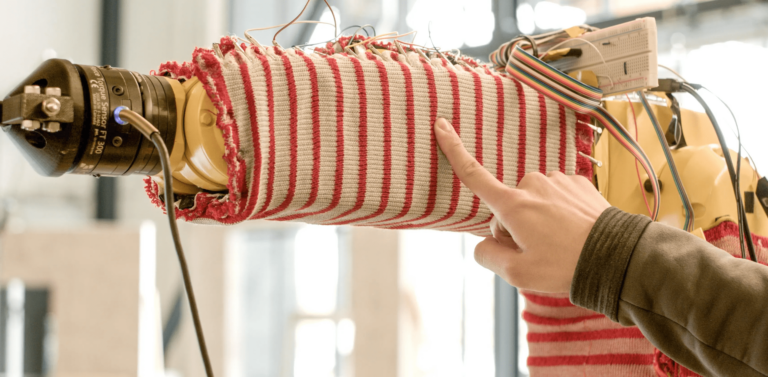Named RobotSweater, a new machine-knitted textile ‘skin’ for robots that can feel touch and pressure has been developed by a research team from Carnegie Mellon University’s Robotics Institute.
The fabric can be customised to suit a range of shapes and even fit uneven three-dimensional surfaces, in the same manner as yarn can be turned into different types of clothing, according to the team.
“We can use that to make the robot smarter during its interaction with humans,” said Changliu Liu, an assistant professor of robotics in the School of Computer Science.
“Knitting machines can pattern yarn into shapes that are nonflat, that can be curved or lumpy,” added James McCann, an SCS assistant professor whose research has focused on textile fabrication(opens in new window) in recent years.
“That made us think maybe we could make sensors that fit over curved or lumpy robots.”
After being knitted, the fabric is designed to help robots sense when they are being touched by humans. It is especially aimed at dangerous industrial settings, where current solutions to detect human-robot interaction use very rigid materials.
Liu notes that these cannot cover the robot’s entire body because some parts need to deform. Instead, this fabric can cover the entirety of the robot, and therefore detect every potential collision, he continued.
The knitted fabric used for RobotSweater is made of two layers of yarn made with metallic fibres to conduct electricity. These are then sandwiched between the two in a netlike, lace-patterned layer.
Then, when pressure is applied to the fabric, such as from human touch, the conductive yarn closes a circuit and is read by the sensors.
“The force pushes together the rows and columns to close the connection,” said Wenzhen Yuan, an SCS assistant professor and director of the RoboTouch lab.
“If there’s a force through the conductive stripes, the layers would contact each other through the holes.”
Aside from developing the knitted fabric, the team faced another challenge in connecting the wiring and electronics components to the soft textile.
In the end, the solution worked by wrapping the wires around snaps attached to the ends of each stripe in the knitted fabric, with snaps being efficient and inexpensive.
The team was able to demonstrate that pushing on a companion robot wearing RobotSweater gave it a direction in which to move, and was used to guide a robotic arm’s movement, including opening and closing a gripper.








